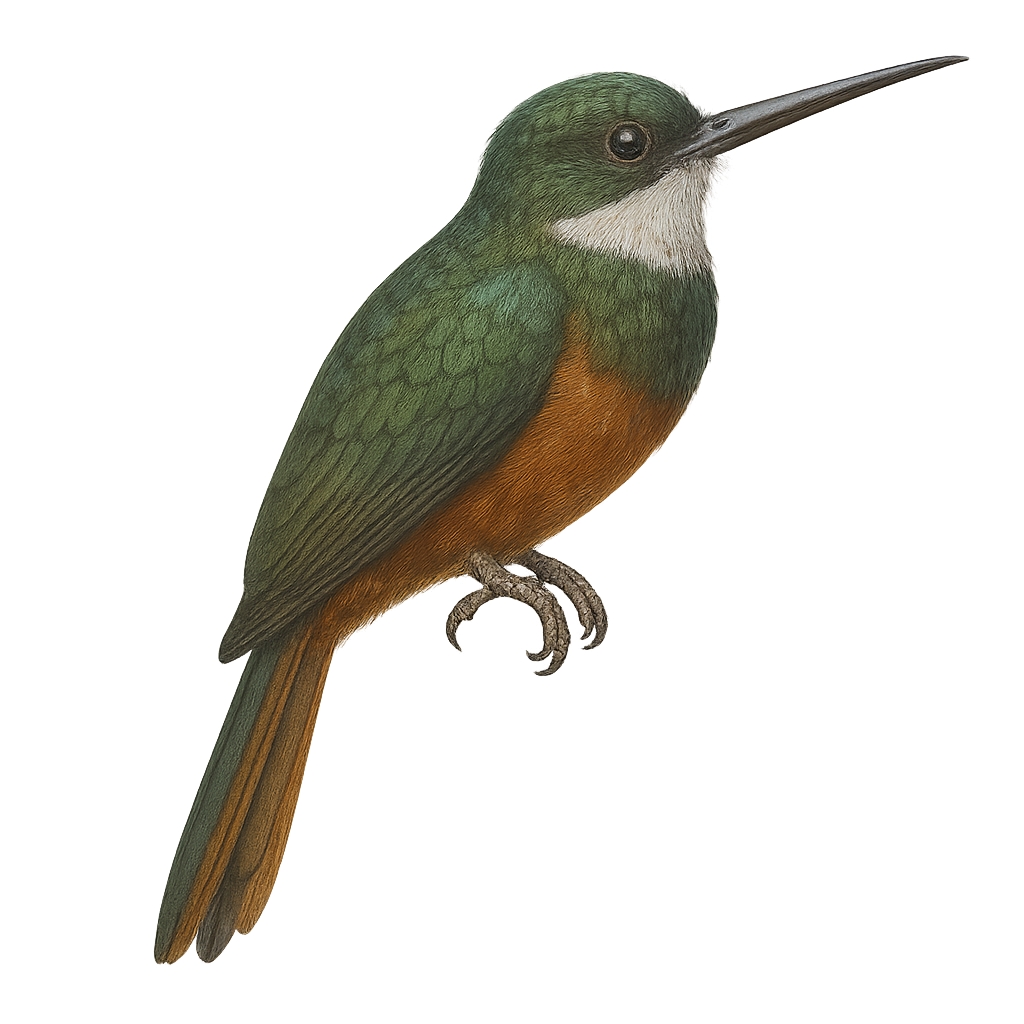Your wildlife photography guide.
Explore the rufous-tailed jacamar in detail, study its behavior, prepare your shots.
Where to observe and photograph the rufous-tailed jacamar in the wild
Learn where and when to spot the rufous-tailed jacamar in the wild, how to identify the species based on distinctive features, and what natural environments it inhabits. The WildlifePhotographer app offers tailored photography tips that reflect the rufous-tailed jacamar’s behavior, helping you capture better wildlife images. Explore the full species profile for key information including description, habitat, active periods, and approach techniques.
Rufous-tailed Jacamar
Scientific name: Galbula ruficauda

IUCN Status: Least Concern
Family: GALBULIDAE
Group: Birds
Sensitivity to human approach: Suspicious
Minimum approach distance: 10 m
Courtship display: March to April
Incubation: 20-23 jours
Hatchings: March to May
Habitat:
Tropical forests, forest edges, wooded areas
Activity period :
Primarily active during the day, with peak activity in the morning and late afternoon.
Identification and description:
The Rufous-tailed Jacamar is an elegant and colorful bird, easily recognizable by its metallic green plumage and long rufous tail. It primarily inhabits the dense tropical forests of Central and South America, where it feeds mainly on insects caught in flight with its long, slender bill. This bird measures about 25 cm in length and is often seen perched quietly on low branches, from where it surveys its territory. Although discreet, its melodious song can be heard throughout the canopy. The Rufous-tailed Jacamar is a sociable bird, often seen in small groups or pairs, and it plays an important role in controlling insect populations in its natural habitat.
Recommended lens:
400 mm – adjust based on distance, desired framing (portrait or habitat), and approach conditions.
Photography tips:
To photograph the Rufous-tailed Jacamar, it is advisable to use a telephoto lens of at least 400mm to capture detailed images without disturbing the bird. Look for a quiet spot in the tropical forest where these birds are often perched on low branches. Be patient and wait for them to settle after catching an insect. The natural light of the morning or afternoon is ideal to bring out the metallic colors of their plumage.
The WildlifePhotographer App is coming soon!
Be the first to explore the best nature spots, track rutting seasons, log your observations, and observe more wildlife.
Already 1 431 wildlife lovers subscribed worldwide

